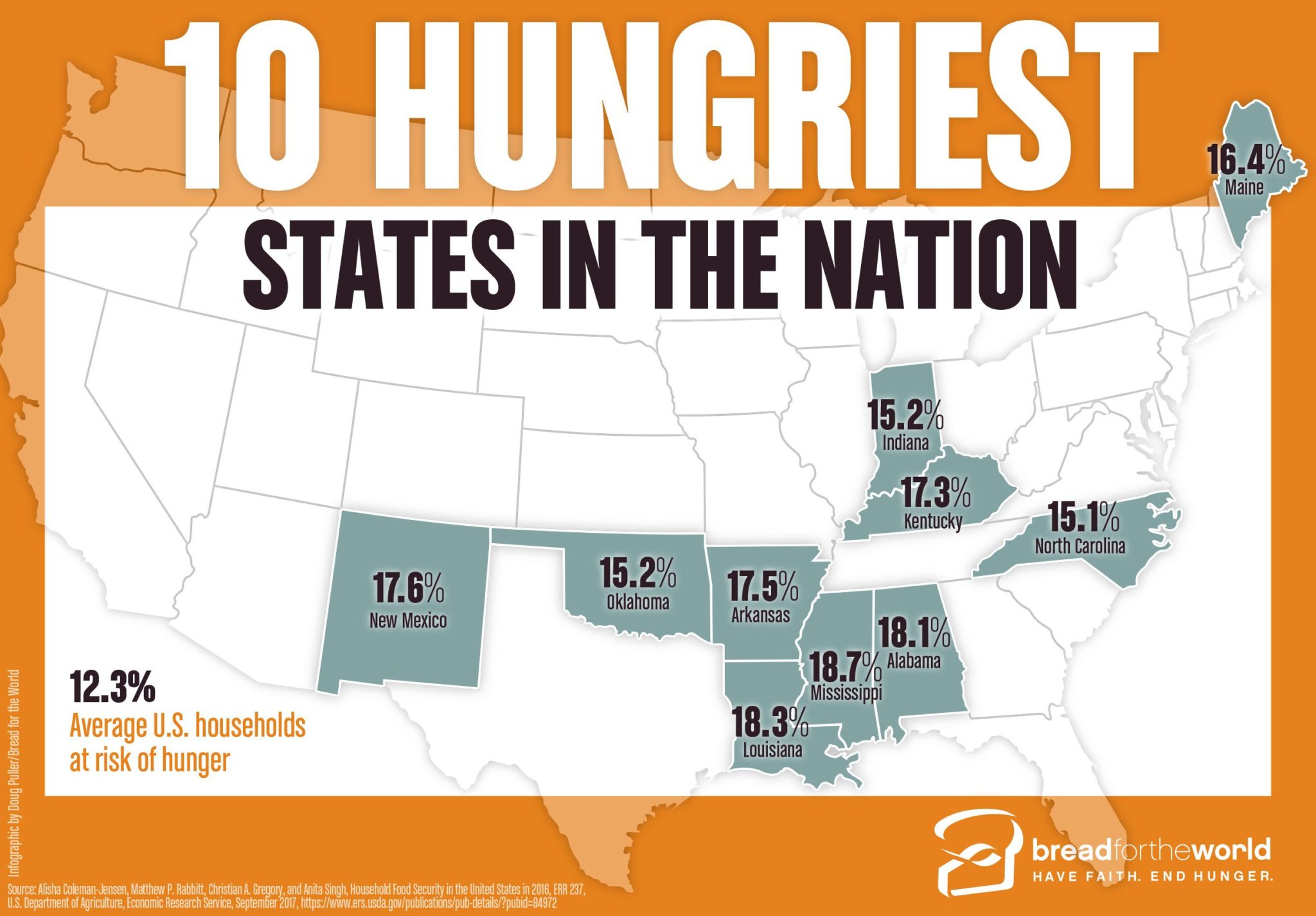Washington, D.C. – New analysis by Bread for the World of the latest hunger data has revealed the 10 hungriest states in the United States. To accompany the analysis, Bread for the World created a new infographic mapping out those 10 hungriest states.
Based on data released by the U.S. Department of Agriculture (USDA) earlier this month, the 10 hungriest states in the U.S. are: Mississippi, Louisiana, Alabama, New Mexico, Arkansas, Kentucky, Maine, Indiana and Oklahoma (tie), and North Carolina.
“The United States has made substantial progress against hunger and poverty over the last several decades,” said Rev. David Beckmann, president of Bread for the World. “Yet this new data shows that we still have a long way to go – especially in these ten hungriest states. Elected officials in these states should support programs and policies that strengthen families and keep people out of hunger.”
Nationally, more than 41 million Americans, including nearly 13 million children, lived at risk of hunger in 2016. That was 12.3 percent of U.S. households. In Mississippi, the hungriest state in the U.S., 18.7 percent of households are at risk of hunger.
Bread’s analysis has found that the best way to end hunger is with a good, family-sustaining job. However, safety-net programs, such as SNAP (food stamps), are critical to helping families get back on their feet. Unfortunately, Congress is currently considering proposals that would make deep cuts to these programs.
The expansion of healthcare coverage has also been an important factor in helping families overcome hunger. People without healthcare must often choose between paying for food or medicine. The Cassidy-Graham bill, under consideration in the Senate, would take healthcare coverage away from tens of millions of people, increasing hunger.
“Safety-net programs, such as SNAP and Medicaid, continue to be a lifeline for struggling Americans,” Beckmann said. “However, if Congress cuts these programs we will likely see a lot more people in the U.S. go hungry. Now is not the time to reverse course on the progress that has been made. We need our elected officials to do the right thing and continue the drive to end hunger.”



